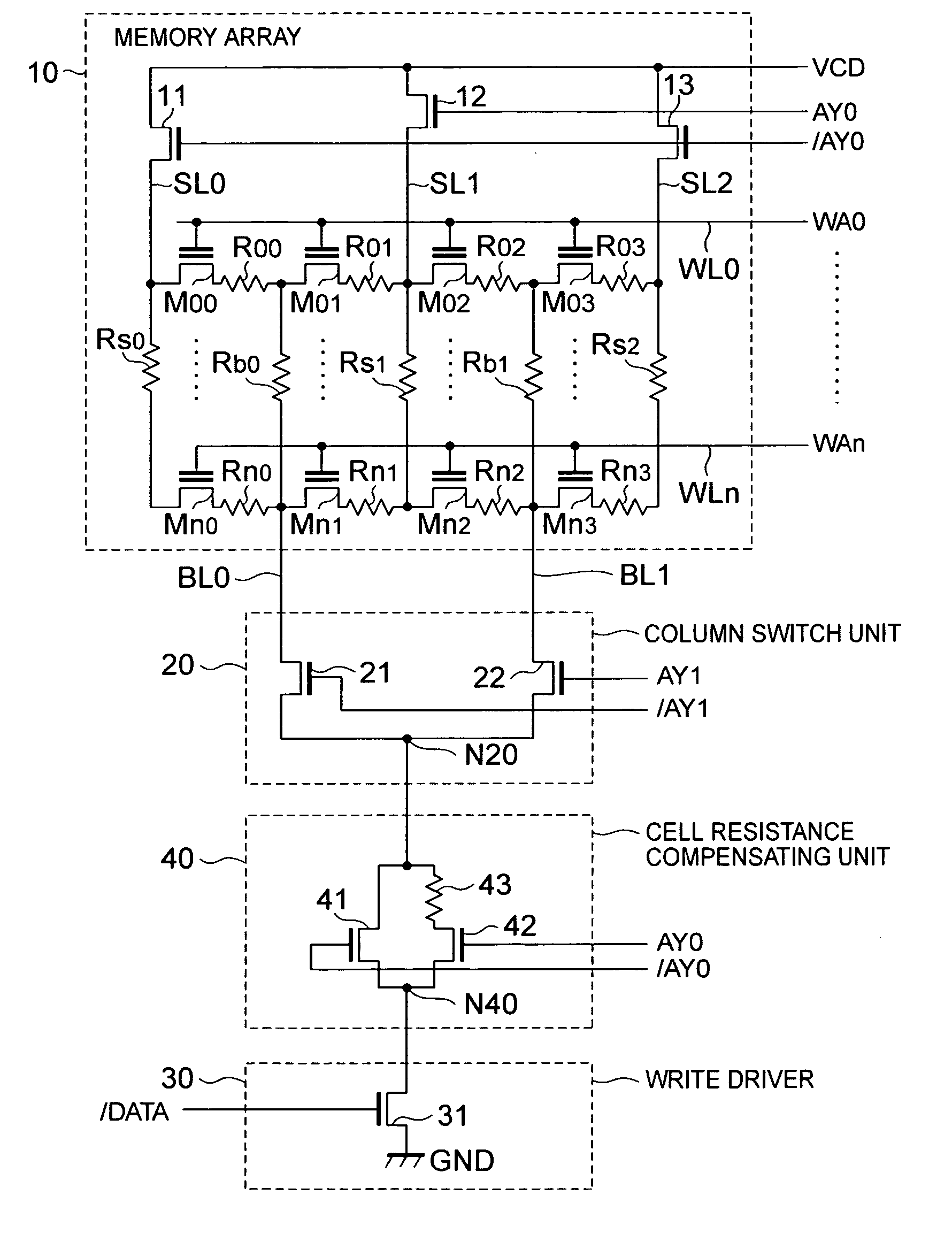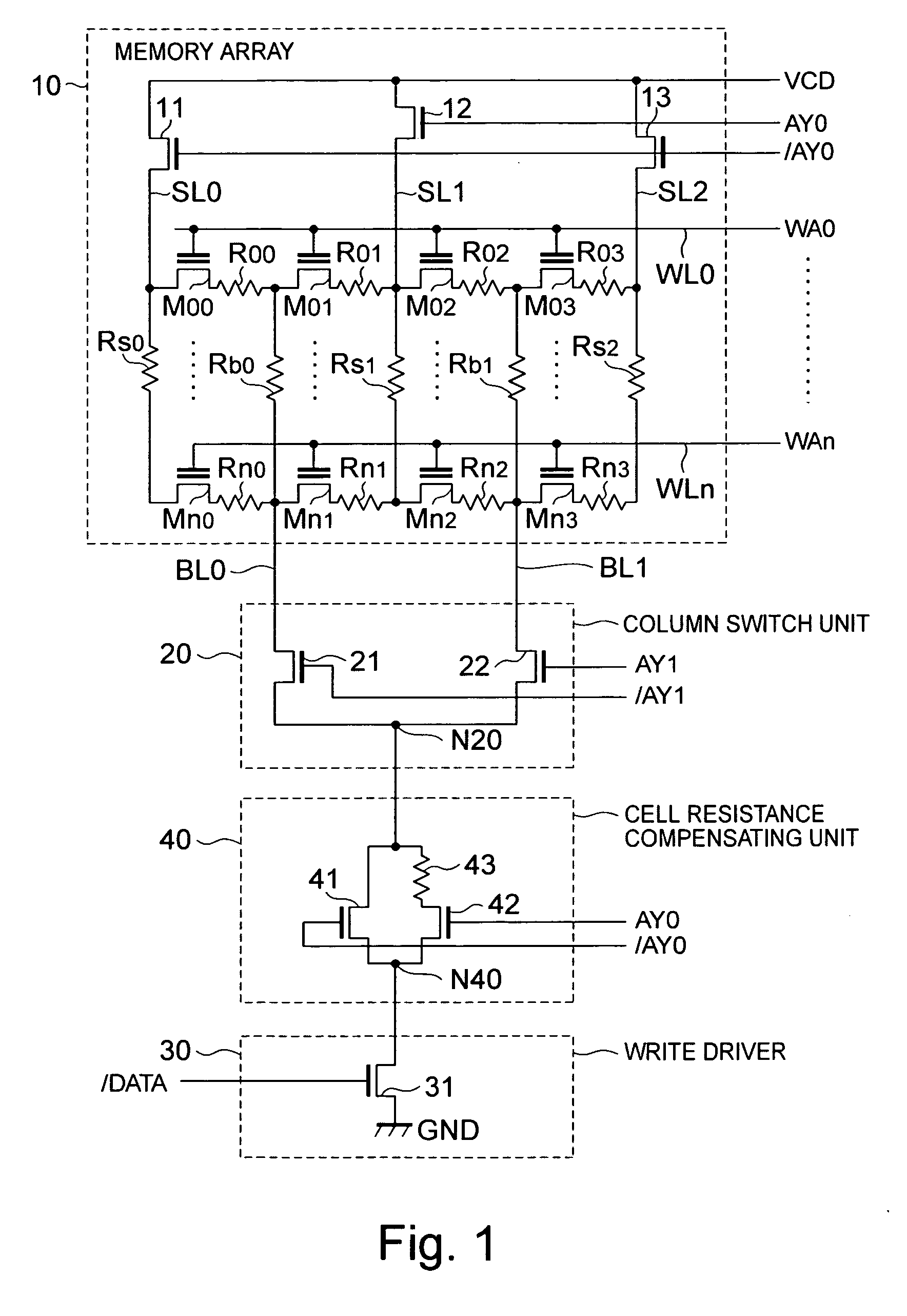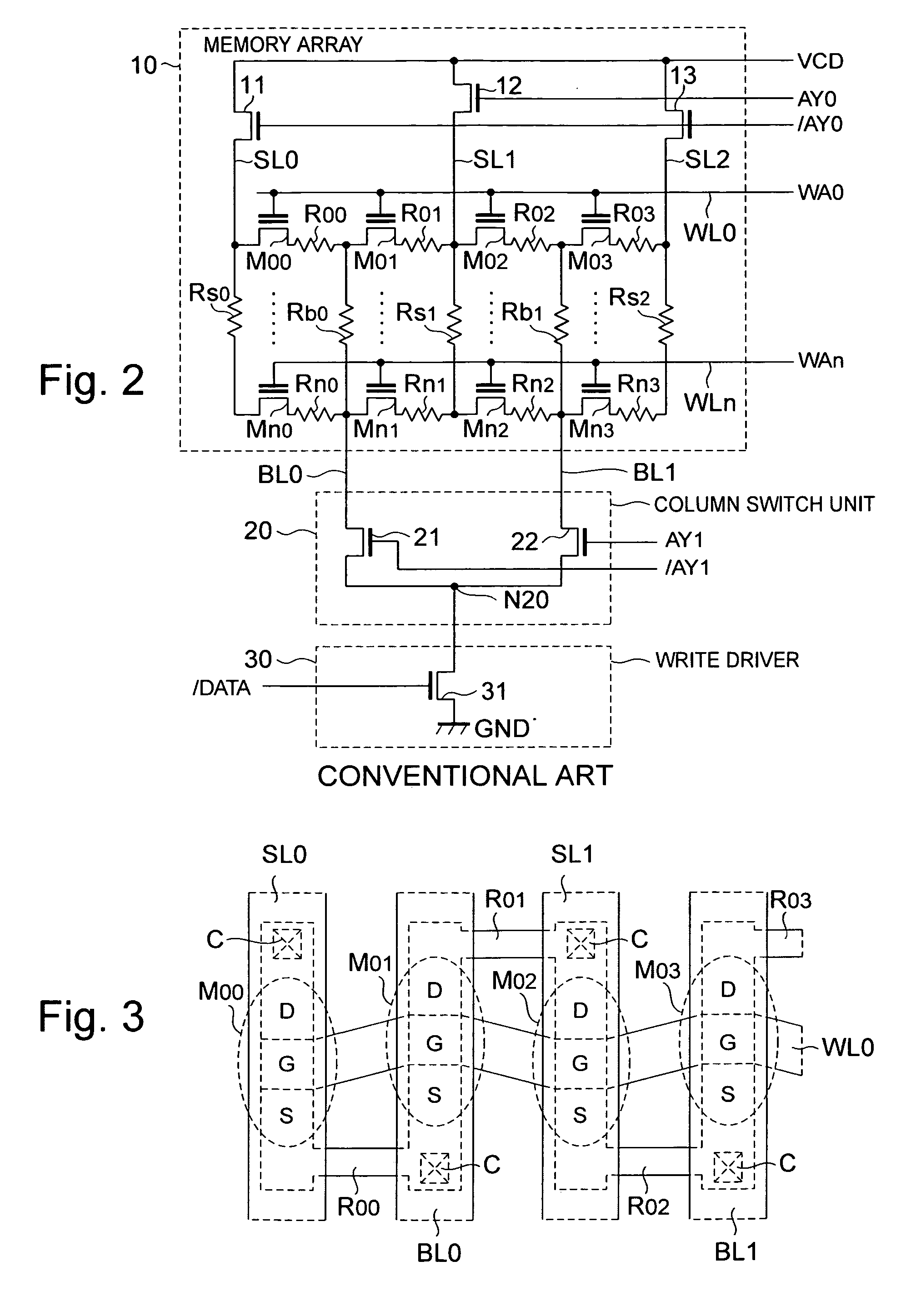Nonvolatile semiconductor memory device and data writing method
- Summary
- Abstract
- Description
- Claims
- Application Information
AI Technical Summary
Benefits of technology
Problems solved by technology
Method used
Image
Examples
first preferred embodiment
[0043]FIG. 1 is a configurational diagram of an EPROM showing a first embodiment of the present invention. Constituent elements common to those shown in FIG. 2 are given common reference numerals respectively.
[0044] The EPROM includes a cell resistance compensating unit 40 provided between a column switch unit 20 and a write driver 30 in addition to a memory array 10, the column switch unit 20 and the write driver 30 similar to those shown in FIG. 2.
[0045] The memory array 10 is one of such a type that MOS transistors having floating gates for storing electric charges are used as memory cells and the memory cells are arranged in matrix form. The memory array 10 includes selector lines SL0, SL1 and SL2 disposed in parallel, and bit lines BL0 and BL1 disposed in parallel between these selector lines SL0 and SL2. Further, the memory array 10 has a plurality of word lines WLi (where i=0 to n) disposed so as to be orthogonal to the selector lines SL0 through SL2 and the bit lines BL0 a...
second preferred embodiment
[0059]FIG. 6 is a configurational diagram of an EPROM showing a second embodiment of the present invention. Constituent elements common to the constituent elements shown in FIG. 1 are given common reference numerals respectively.
[0060] The EPROM includes a bit line resistance compensating unit 50 provided between a cell resistance compensating unit 40 and a write driver 30 in addition to two sets of memory arrays 100 and 101, a column switch unit 20, the drive driver 30 and the cell resistance compensating unit 40.
[0061] Each of the memory arrays 100 and 101 has a configuration similar to the memory array 10 shown in FIG. 1. The memory arrays 100 and 101 share bit line BL0 and BL1 and have individual or discrete selector lines SL0, SL1 and SL2. These memory arrays 100 and 101 are respectively exclusively selected by select signals AB0 and AB1 supplied to word lines WL0 through WLn.
[0062] The bit line resistance compensating unit 50 is one of such a type that when a memory array (...
third preferred embodiment
[0068]FIG. 7 is a configurational diagram of an EPROM showing a third embodiment of the present invention. Constituent elements common to the constituent elements shown in FIG. 6 are given common reference numerals respectively.
[0069] The EPROM includes a bit line resistance compensating unit 50A provided between a cell resistance compensating unit 40 and a write driver 30 in addition to two sets of memory arrays 100 and 101, a redundant memory array 10R, a column switch unit 20, the drive driver 30 and the cell resistance compensating unit 40.
[0070] Any of the memory arrays 100 and 101 and the redundant memory array 10R has a configuration similar to the memory array 10 shown in FIG. 1. They share bit line BL0 and BL1 and have individual or discrete selector lines SL0, SL1 and SL2. Incidentally, the redundant memory array 10R is disposed between the memory arrays 100 and 101. When either one of the memory arrays 100 and 101 is defective, the redundant memory array 10R is selected...
PUM
 Login to View More
Login to View More Abstract
Description
Claims
Application Information
 Login to View More
Login to View More - R&D
- Intellectual Property
- Life Sciences
- Materials
- Tech Scout
- Unparalleled Data Quality
- Higher Quality Content
- 60% Fewer Hallucinations
Browse by: Latest US Patents, China's latest patents, Technical Efficacy Thesaurus, Application Domain, Technology Topic, Popular Technical Reports.
© 2025 PatSnap. All rights reserved.Legal|Privacy policy|Modern Slavery Act Transparency Statement|Sitemap|About US| Contact US: help@patsnap.com



